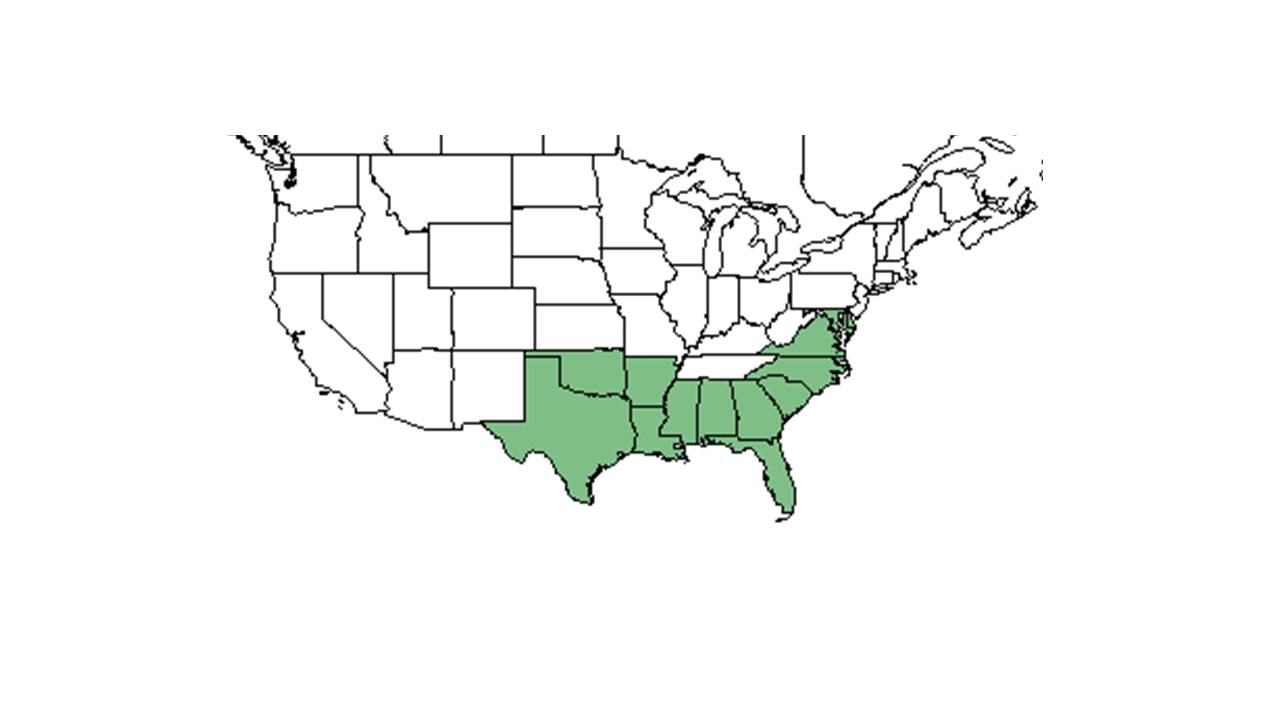Difference between revisions of "Elephantopus nudatus"
(→Description) |
|||
| Line 24: | Line 24: | ||
==Ecology== | ==Ecology== | ||
===Habitat=== <!--Natural communities, human disturbed habitats, topography, hydrology, soils, light, fire regime requirements for removal of competition, etc.--> | ===Habitat=== <!--Natural communities, human disturbed habitats, topography, hydrology, soils, light, fire regime requirements for removal of competition, etc.--> | ||
| + | Is found in edges of swamps, creek bottomlands, hammocks, Longleaf pine-wiregrass savannas, edges of deciduous forests, open pine flatwoods, boggy bottomlands, in wooded area above floodplains and in floodplains, in mesic flatwoods, and edges of ponds (FSU Herbarium). Is also found in human disturbed areas such as along the roadsdie, flatwoods that have been clear cut, and in lawn adjacent to parking lot area (FSU Herbaruim). Can thrive in areas of low light or high light levels (FSU Herbarium). Is associated with moist, loamy sand; fine, sandy soils; alluvial sands; and loamy humus soil types (FSU Herbarium). | ||
| + | |||
===Phenology=== <!--Timing off flowering, fruiting, seed dispersal, and environmental triggers. Cite PanFlora website if appropriate: http://www.gilnelson.com/PanFlora/ --> | ===Phenology=== <!--Timing off flowering, fruiting, seed dispersal, and environmental triggers. Cite PanFlora website if appropriate: http://www.gilnelson.com/PanFlora/ --> | ||
===Seed dispersal=== | ===Seed dispersal=== | ||
Revision as of 14:11, 13 July 2015
| Elephantopus nudatus | |
|---|---|
Error creating thumbnail: Unable to save thumbnail to destination
| |
| Scientific classification | |
| Kingdom: | Plantae |
| Division: | Magnoliophyta - Flowering plants |
| Class: | Magnoliopsida – Dicotyledons |
| Order: | Asterales |
| Family: | Asteraceae ⁄ Compositae |
| Genus: | Elephantopus |
| Species: | E. nudatus |
| Binomial name | |
| Elephantopus nudatus A. Gray | |

| |
| Natural range of Elephantopus nudatus from USDA NRCS Plants Database. | |
Contents
Description
Common Name: smooth elephantsfoot
Distribution
Ecology
Habitat
Is found in edges of swamps, creek bottomlands, hammocks, Longleaf pine-wiregrass savannas, edges of deciduous forests, open pine flatwoods, boggy bottomlands, in wooded area above floodplains and in floodplains, in mesic flatwoods, and edges of ponds (FSU Herbarium). Is also found in human disturbed areas such as along the roadsdie, flatwoods that have been clear cut, and in lawn adjacent to parking lot area (FSU Herbaruim). Can thrive in areas of low light or high light levels (FSU Herbarium). Is associated with moist, loamy sand; fine, sandy soils; alluvial sands; and loamy humus soil types (FSU Herbarium).